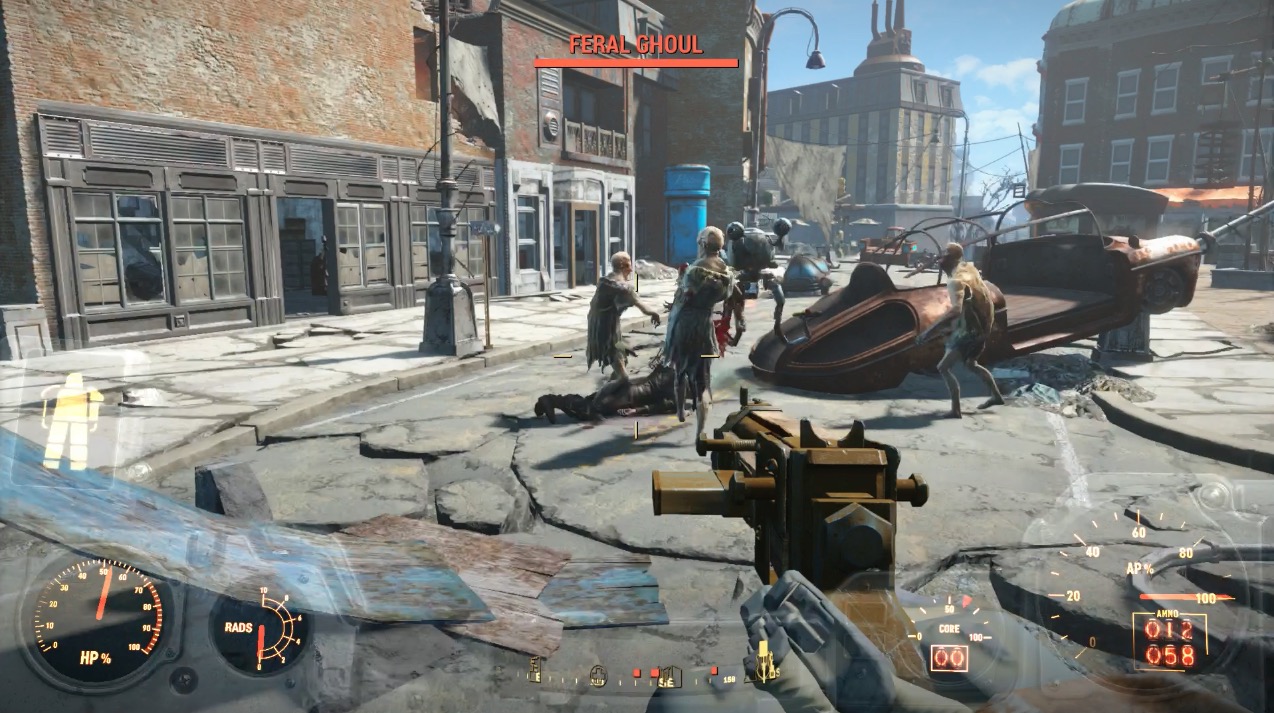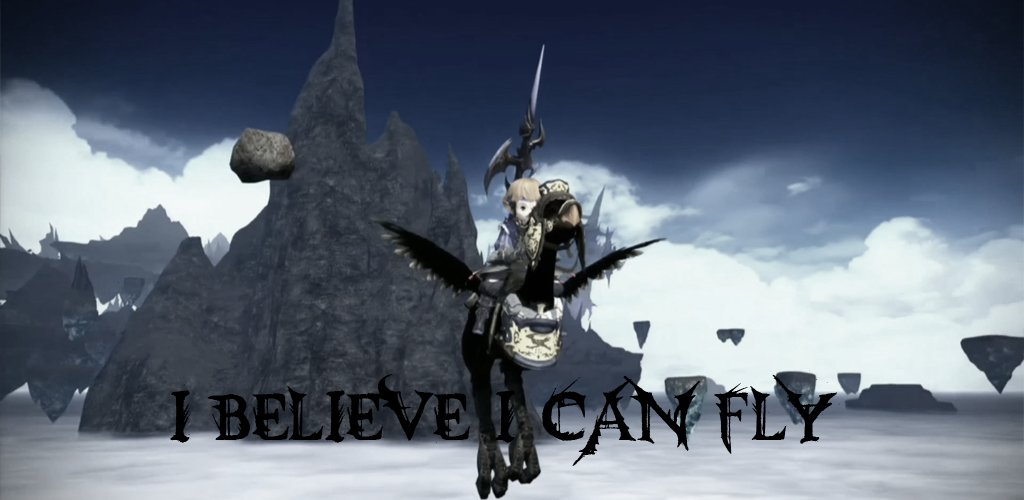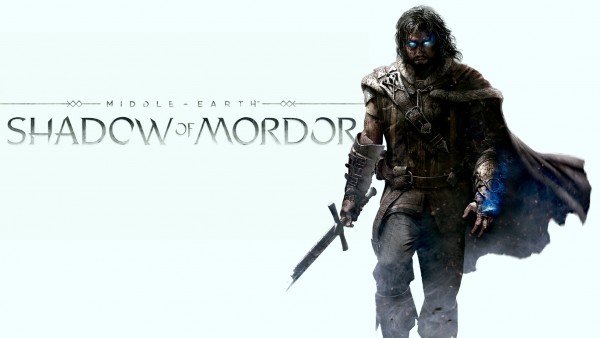

Fable: The Journey represents Microsoft‘s latest – and likely final – attempt to prove that Kinect, in its current incarnation, is a viable control interface for more than just dance simulators and mini-game collections. Developed by Lionhead Studios, with the now departed Peter Molyneux serving as Creative Consultant, The Journey puts players on a guided, first-person tour of Albion which, thanks to the power of Unreal Engine, has never looked better. But does the game play as good as it looks? Read on for our full review of Fable: The Journey.
Set 50 years after the events of Fable III (read our review), Fable: The Journey tells the story of Gabriel, a young Dweller who becomes separated from his caravan and is ultimately called upon to save Albion from The Corruption, an evil entity that is bent on destroying the land with flowing rivers of ropey, bloody goo. Gabriel is aided in his quest by Theresa, the enigmatic, blind seer from the numbered Fable games, and his horse, Seren. It’s a classic Hero’s Journey setup that should lead to rousing adventure – but before we get to any of that, a message:
“Welcome! Take a seat, get comfortable and get ready for your Journey! Try to sit upright, and keep your legs uncrossed. For best results, place your Kinect sensor in a central position above or below your TV. You may need to sit forward in your seat if it has… High arms… A low seat… Or a soft back. Make sure you have enough room to play. Try not to sit too close to other people or objects. To access the Kinect Guide while playing, hold your left arm straight out to your side. Try this now to begin your Journey.”
Not entirely encouraging, is it? And yet, that message is the first thing that greets players who boot up the game, every single time they do so (though it can, thankfully, be skipped). Consider it foreshadowing. The Journey is regularly interrupted with control tutorials – almost constantly at first, less frequently as it progresses.
The game itself roughly breaks down into two primary modes of play: driving sequences and combat sequences. Gabriel and Theresa travel the lands of Albion in a horse-drawn buggy, with frequent stops during which Gabriel must use his newly acquired magical gauntlets to dispatch wave after wave of threatening foes. Rest stops, where Gabriel can tend to Seren, help break up the experience.
On the occasions when everything works exactly as advertised, Fable: The Journey proves to be good – if simplistic – fun. Using Gabriel’s gauntlets to launch enemies into the air, and then decimating them with a well-placed blast of magical energy, can be extremely satisfying. Sequences in which Gabriel and Theresa flee from The Corruption, Seren galloping at a breakneck pace as the surrounding landscape is overtaken and defiled by The Corruption’s crimson mass, are among the most intense, graphically potent set-pieces The Journey has to offer. Sadly, those occasions are too few and far between, and the game is constantly undermined by its finicky, imprecise Kinect controls.
Surprisingly enough, the simple driving segments of the game fare worse than the shooting gallery portions. It should be easy. Players have two virtual reigns, left and right. Pull on the left reign and let the right go slack to steer left, reverse that to steer right. Regardless, guiding Seren along Albion’s roads is, at best, a haphazard endeavor. At worst, it’s a never ending exercise in course and speed correction – and it makes up a major portion of The Journey’s playtime.
The roads of Albion are littered with glowing Experience Orbs which can be used to power up Gabriel’s magical abilities. Green orbs can be picked up at any speed, blue orbs must be picked up when Seren is moving slowly, and Red Orbs require her to be at a full gallop. It’s hard enough to get Seren to travel in a straight line, much less carefully navigate the road to collect orbs. There are also obstacles to avoid and rough patches of road that must (initially) be traversed slowly lest Seren get hurt, making the whole enterprise that much more frustrating. Driving the horse and buggy is The Journey’s first and biggest failure.
There is also the matter of Seren herself. There are some great horses in video games: Epona in The Legend of Zelda: Ocarina of Time and (especially, so far as I’m concerned) Argo from Shadow of the Colossus. Seren won’t be joining that list, despite Lionhead’s intentions to the contrary.
As with the dog from Fable II, The Journey’s designers clearly want players to emotionally invest in Seren. Gabriel can brush her, feed her apples, and occasionally has to tend to her injuries – players mime the motion for pulling arrows from her flesh, then use the magic of the gauntlets to heal the gaping wound left behind. For that matter, Seren is rendered beautifully: shiny coat with distinct hair, attentive, believably alive eyes – but it’s all for nothing. She has no agency, no obvious personality or bearing on events. Seren’s defining characteristic is that she’s a pain in the ass to control, and dramatic story points that hinge on her fall flat as a result. Gabriel may care deeply about Seren, but the player never does.
Fortunately, The Journey’s combat is better than its driving. Gabriel’s left hand controls the Push spell, which can be used to manipulate objects in the environment – including enemies – while his right hand deals damage with (eventually) one of three magical attacks: Bolt, Fireball and Shards. Letting loose with the game’s spells is easy enough: bring the appropriate hand to your shoulder, and “push” toward the spell’s target. Incoming attacks can be blocked by holding your left arm horizontally in front of yourself.
Needless to say, spell casting becomes increasingly complex as more attack options are enabled. Fireballs must be primed by either shaking your right hand before attacking, or speaking the word “Fireball” out loud. Attacking with Shards, meanwhile, requires that the player holds his or her right hand over and behind their right shoulder, as if throwing a spear, or by saying “Magical Shard.” Generally, motions are recognized more quickly than speech. Each of these actions, on their own, are simple to perform reliably. The trouble is that in the heat of combat, players will need to perform multiple actions, often simultaneously, and Kinect gets confused by the commotion.
Particularly troublesome are “crossover” attacks, in which the player needs to target an enemy on the left side of the screen with his or her right hand, or vice versa. The Journey actually warns players against crossing their arms over themselves, but it is often inescapably necessary. While it’s true that The Journey’s combat controls work much more reliably than its driving controls, that’s cold comfort when it’s all but impossible to accurately target a given enemy, and the player ends up dying as a result. Fortunately, The Journey isn’t particularly difficult, and ample checkpoints ensure that there is never too much of the game to repeat.
It’s not all bad. The Journey is frequently lovely to behold, and the scale of its world is impressively vast. Traveling along with Theresa as Albion unfolds in front of you is quietly awesome, and the disparate regions all manage to convey a tangible sense of place – too bad they can’t be freely explored (there are occasional branches in the road, but they have little real bearing on the path players take through the wold).
For that matter, The Journey’s voice acting and score are both top notch, as is the on-screen performance of Gabriel during cutscenes, his subtly exaggerated features easily communicating a wide range of emotions and clearly reflecting his state of mind. He’s a likable, distinct hero who frankly deserves a better game. Perhaps he’ll get it when Xbox 720 and Kinect 2.0 – with its rumored ability to read lips and recognize emotions – roll around, but for now, there’s just no need to take The Journey.
Fable: The Journey is available now for Xbox 360 with Kinect.
–
Follow me on Twitter @HakenGaken.




 How To Get Destiny: The Taken King Fall Raid Hidden Chest Location At Jumping Puzzle, Rewards Revealed
How To Get Destiny: The Taken King Fall Raid Hidden Chest Location At Jumping Puzzle, Rewards Revealed What is it Like to Date a Star Wars Fan?
What is it Like to Date a Star Wars Fan? MGS 5 The Phantom Pain: Bugs and Issues / Quiet shower scene
MGS 5 The Phantom Pain: Bugs and Issues / Quiet shower scene How to get Middle Earth: Shadow of Mordor Black Celebration Trophy, Achievement for PlayStation, Xbox and PC
How to get Middle Earth: Shadow of Mordor Black Celebration Trophy, Achievement for PlayStation, Xbox and PC The Indispensible Dragon Age: Inquisition Gameplay Guide
The Indispensible Dragon Age: Inquisition Gameplay Guide